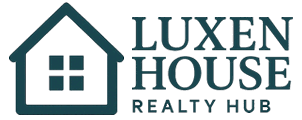
- Why-Cash-Flow-Matters-in-Rental-Investing
- Key-Components-of-Rental-Property-Cash-Flow
- How-to-Calculate-Cash-Flow-Step-by-Step
- Real-World-Example-of-Cash-Flow-Calculation
- Common-Mistakes-Investors-Make
- Improving-and-Maximizing-Rental-Cash-Flow
- Get-Professional-Guidance-from-Luxen-House-Realty-Hub
1. Why Cash Flow Matters in Rental Investing
Cash flow is the lifeblood of any successful rental property investment. It represents the money that remains after all property-related expenses are paid each month. For investors, positive cash flow means consistent income, financial stability, and long-term growth potential.
Many new landlords focus solely on property appreciation, but cash flow provides something more immediate — monthly income that can cover mortgage payments, maintenance, and even fund future investments. Understanding rental property cash flow calculations helps investors avoid costly surprises and make data-driven decisions.

90W Luxury Apartments / 90w nyc
New YorkNew York CountyNew York
90 Washington St, New York, NY 10006, USA
2. Key Components of Rental Property Cash Flow
2.1 Gross Rental Income
This is the total amount of rent you collect from tenants each month before any deductions. If you charge $2,000 per month in rent, your annual gross income is $24,000. Additional income sources like parking fees or laundry machines should also be included.

787 Seventh Avenue / 787 seventh avenue new york
New YorkNew York CountyNew York
787 7th Ave, New York, NY 10019, USA
2.2 Operating Expenses
Operating expenses include everything needed to maintain and manage your property: property taxes, insurance, repairs, utilities, and property management fees. A general rule of thumb is to allocate about 30–50% of your rental income toward operating costs.
2.3 Loan Payments
Your mortgage principal and interest payments represent the largest recurring expense. When calculating cash flow, subtract your total monthly mortgage payment from the property’s net operating income (NOI).
2.4 Vacancy and Maintenance Reserves
No property is occupied 100% of the time. Savvy investors account for potential vacancies and repair costs by setting aside at least 5–10% of rental income for each. This ensures financial stability even during downtime or unexpected expenses.
3. How to Calculate Cash Flow Step by Step
3.1 Step 1: Determine Gross Income
Add up all rental payments and any additional income streams. For example, a property renting for $2,000 monthly with $100 in parking fees has a gross income of $2,100 per month.
3.2 Step 2: Subtract Operating Expenses
Include property taxes, insurance, maintenance, HOA fees, and management costs. If total monthly expenses are $800, your net operating income (NOI) is $1,300.
3.3 Step 3: Subtract Loan Payments
If your monthly mortgage payment is $900, the remaining $400 represents your monthly cash flow. Positive cash flow means your investment is profitable; negative cash flow indicates you’re losing money and need to reassess your strategy.
3.4 Step 4: Annualize the Results
Multiply your monthly cash flow by 12 to project your yearly profit. In this case, $400 × 12 = $4,800 in annual net income — a helpful number for evaluating your return on investment (ROI).
4. Real-World Example of Cash Flow Calculation
Let’s say you purchase a duplex for $300,000 with a $60,000 down payment and a mortgage of $240,000 at 6% interest. The total rent collected from both units is $3,000 per month.
Your monthly expenses might include:- Mortgage: $1,500- Property taxes: $250- Insurance: $100- Maintenance reserve: $150- Property management: $200
After subtracting these from your gross rent, your cash flow equals $1,500 per month ($3,000 income – $1,500 expenses). This positive cash flow translates to $18,000 annually — a strong return on your investment while the property also appreciates in value.
5. Common Mistakes Investors Make
5.1 Ignoring Hidden Costs
Many investors overlook expenses such as pest control, landscaping, or utility fluctuations. These hidden costs can quickly erode profitability. Always analyze your property’s financial performance with a realistic mindset.
5.2 Overestimating Rent Income
Market rents can fluctuate due to local competition and economic changes. Relying on inflated projections can result in disappointing returns. Research local rental data before buying or adjusting rents.
5.3 Underestimating Vacancy Rates
Even top-performing rental markets experience turnover. Neglecting to budget for vacant months can cause unexpected shortfalls. Include at least a one-month vacancy buffer per year in your projections.
6. Improving and Maximizing Rental Cash Flow
6.1 Increase Rent Strategically
Instead of drastic rent hikes, consider small, regular adjustments aligned with local market trends. You can also add amenities such as upgraded appliances or high-speed internet to justify modest increases.
6.2 Reduce Maintenance Costs
Preventative maintenance is often cheaper than emergency repairs. Regular inspections, efficient appliances, and durable materials can all help reduce long-term expenses.
6.3 Refinance When the Time Is Right
If market interest rates drop, refinancing your mortgage can significantly lower your monthly payments and improve your cash flow. Always calculate the refinancing costs to ensure the savings justify the process.
6.4 Consider Self-Management
For smaller portfolios, managing your property directly can save 8–10% in management fees. However, this approach requires time, patience, and strong communication skills.
7. Get Professional Guidance from Luxen House Realty Hub
Understanding rental property cash flow calculations is vital for every investor, whether you’re buying your first property or managing a portfolio. If you’re looking for expert advice on evaluating investments, Luxen House Realty Hub offers data-driven insights, market analysis tools, and personalized consulting services to help maximize your returns.
From financial modeling to portfolio optimization, Luxen House Realty Hub connects investors with the resources they need to build lasting wealth through real estate. Learn how to make smarter, more profitable decisions and achieve financial freedom with confidence.







 Regus0.0 (0 reviews)
Regus0.0 (0 reviews) Artemisia Management LLC3.0 (17 reviews)
Artemisia Management LLC3.0 (17 reviews) New Island Realty Inc.3.0 (8 reviews)
New Island Realty Inc.3.0 (8 reviews) Medow Property Group Ltd0.0 (0 reviews)
Medow Property Group Ltd0.0 (0 reviews) Carnegie House (enter on 6th Ave)4.0 (8 reviews)
Carnegie House (enter on 6th Ave)4.0 (8 reviews) venegas&latinos associates0.0 (0 reviews)
venegas&latinos associates0.0 (0 reviews) How to Research Neighborhood Trends Before Buying – Smart Homebuyer Insights | Luxen House Realty Hub
How to Research Neighborhood Trends Before Buying – Smart Homebuyer Insights | Luxen House Realty Hub Tips for Boosting Your Home’s Curb Appeal Before Listing | Luxen House Realty Hub
Tips for Boosting Your Home’s Curb Appeal Before Listing | Luxen House Realty Hub Tips for Buying a Home in a Historic District: What You Need to Know
Tips for Buying a Home in a Historic District: What You Need to Know Understanding the Pros and Cons of Short-Term Rentals
Understanding the Pros and Cons of Short-Term Rentals Understanding the Risks and Rewards of Foreclosed Property | Luxen House Realty Hub
Understanding the Risks and Rewards of Foreclosed Property | Luxen House Realty Hub How to Sell a Home Quickly During Peak Season - Tips and Strategies
How to Sell a Home Quickly During Peak Season - Tips and Strategies